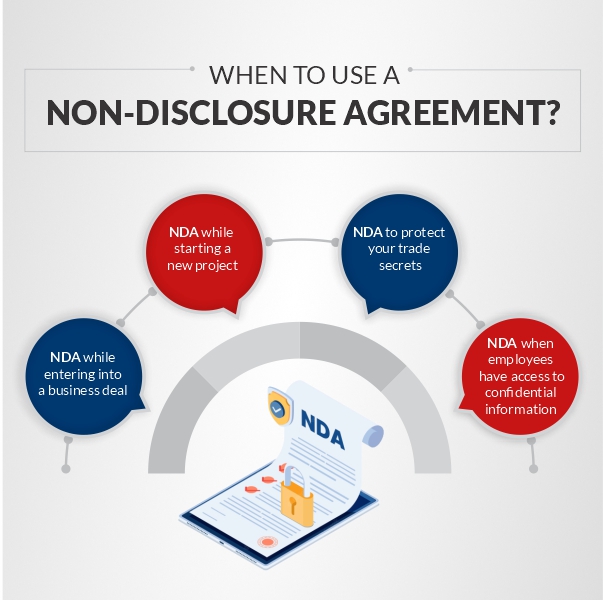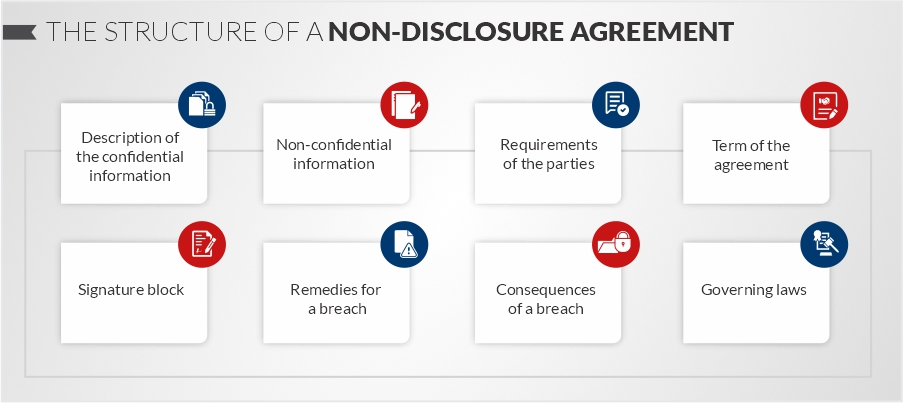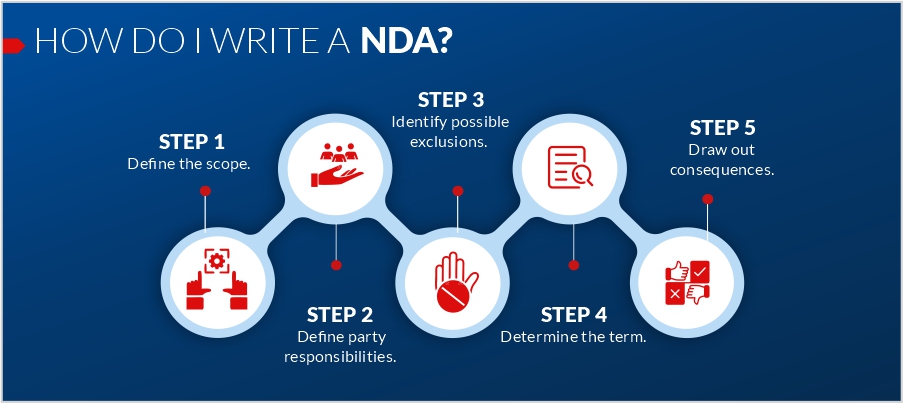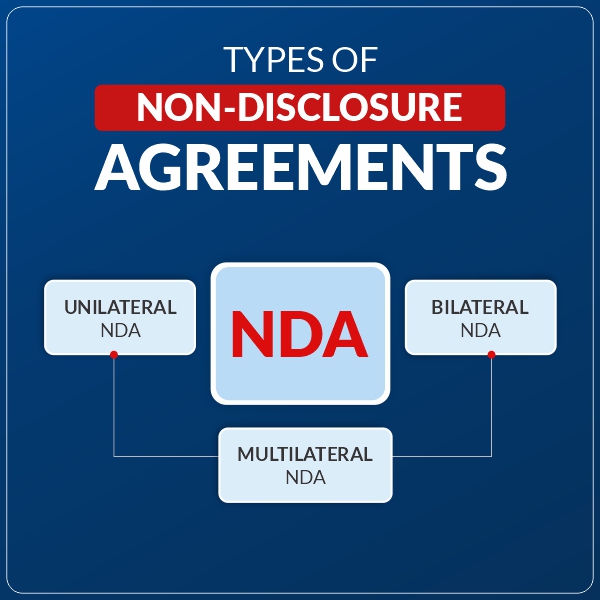A Non-Disclosure Agreement in India (NDA) is a vital tool for protecting your business’s intellectual property under the Indian Contract Act of 1872. Whether you’re launching a startup or managing an established company, an NDA in India is crucial in safeguarding your confidential information from unauthorized disclosure. In India, NDAs are commonly used in various scenarios, including business negotiations, joint ventures, and mergers and acquisitions.
Despite their importance, many business owners and entrepreneurs often struggle with understanding how to draft, negotiate, and enforce NDAs effectively. That’s why we’ve put together this comprehensive guide to Non Disclosure Agreements in India, covering everything from the legal framework to practical tips and common pitfalls to avoid.
In this blog, you’ll discover the different types of NDAs, learn the importance of clearly defining confidential information, and understand the steps needed to protect it. We’ll also discuss the potential consequences of poorly drafted NDAs, ensuring you’re well-prepared to protect your business’s sensitive information.
Whether you’re a business owner, entrepreneur, or legal professional, this blog is your go-to resource for mastering NDAs and protecting your valuable assets. Stay tuned for more insights, and feel free to reach out with any questions or concerns.
Key Takeaways
- Non-Disclosure Agreements are essential legal tools to protect confidential information, especially in business dealings, project collaborations, and protecting trade secrets.
- There are different types of non-disclosure agreements, including unilateral, bilateral, and multilateral agreements, each catering to specific confidentiality needs.
- Important elements of an NDA include the description of confidential information, terms of confidentiality, consequences of breach, and governing laws among others.
- It’s recommended to have a legal review to make sure the NDA in India is enforceable and compliant with Indian law and professional standards.
Table of Contents
What is a Non-Disclosure Agreement?
Who are the Parties of a Non-Disclosure Agreement?
Who needs Non-Disclosure Agreements?
Types of Non-Disclosure Agreements
When to Use a Non-Disclosure Agreement in India?
Structure of a Non-Disclosure Agreement
How Do I Write a Non-Disclosure Agreement?
What is a Non-Disclosure Agreement?
Loading...
Who are the Parties of a Non-Disclosure Agreement?
Non-Disclosure Agreements (NDAs), within India and globally, there are primarily two parties in this agreement:
Disclosing Party:
The Disclosing Party is the individual or entity that shares confidential information. For example, imagine a tech startup about to launch an innovative app. The startup (Disclosing Party) may need to share its app’s unique features and business model with potential investors to secure funding. In this scenario, the startup must ensure that any information shared is clearly marked as confidential, especially if the details aren’t immediately obvious as sensitive.
Key Obligations:
- Label Information Clearly: Always mark or declare shared information as confidential, especially if it isn’t immediately recognizable as such.
- Share Only What’s Necessary: Limit the disclosed information to what’s essential for the purpose of the agreement, such as details crucial for investor evaluation.
- Document the Exchange: Keep a record of what information is shared and when, to avoid disputes over what is considered confidential later.
Recipient Party:
The Recipient Party is the individual or entity that receives the confidential information. For example, a manufacturing company (Recipient Party) might receive sensitive design plans from a client who wants a custom product made. Here, the manufacturing company must handle the design plans with care, ensuring they don’t share them with third parties or use them for any purpose outside of the agreed-upon project.
Key Obligations:
- Maintain Confidentiality: Keep all received information private and use it solely for the reasons outlined in the NDA, such as producing the custom product.
- Implement Strong Security: Protect the confidential information as you would your own critical data, using secure storage and communication methods.
- Report Breaches Immediately: If any confidential information is accidentally leaked or accessed by unauthorized persons, notify the Disclosing Party right away to mitigate potential damage.
Who needs Non-Disclosure Agreements?
For Employees:
When employees sign an NDA, they are legally bound to keep their company’s proprietary information or any other private details completely confidential. This could include special processes, trade secrets, or business strategies that gives that company a competitive edge. For employees, this often raises questions like, “What exactly is included in this confidential information?” and “How long am I bound by this contract, even after leaving the company?”
So it becomes very important that employees are careful not to accidentally disclose sensitive information in casual conversations or on social media. Employees in roles with access to some significant intellectual property, such as R&D or strategic planning, may be facing stricter NDA terms including lawsuits and financial penalties.
For Employers:
When it comes to hiring or including more people as employees in your company, NDAs can become vital tools for safeguarding your company’s intellectual property, customer lists, and any other sensitive information that could be troubling if it is disclosed.
But this situation becomes more complex when dealing with third-party contractors or temporary employees, who might have limited loyalty to the company. Employers must also consider the enforceability of these agreements, especially in different jurisdictions, and ensure they are clear about the consequences of breaching an NDA. Here are a few major questions that every employer should ask themselves before crafting and finalizing an NDA:
- Have we modified the NDA to handle any particular risks unique to our sector?
- How will we keep an eye on NDA compliance once it is signed?
- Are the consequences of breaking the NDA severe enough to discourage breaking it?
For Stakeholders:
Stakeholders, especially investors and business partners, rely on NDAs to protect the confidentiality of any information shared during negotiations or business dealings. For stakeholders, NDAs are often needed for mergers and acquisitions, joint ventures, or when disclosing detailed financial reports. A non-disclosure agreement for stakeholders makes sure their strategic interests are protected, which is important when discussing future corporate plans or competitive strategies that, if leaked, could change market dynamics or even affect stock prices.
For Freelancers and Consultants:
Given the one-time nature of their work, freelancers and consultants frequently encounter or use Non-Disclosure Agreements. An NDA in commissioned work protects both the customer and the freelancer by keeping project details confidential, protecting intellectual property, and figuring out who owns the finished product. It helps to avoid disagreements by making sure sensitive information and creative ideas aren’t being used or shared without permission.
For Inventors and Innovators:
If you’re an inventor or creator, an NDA helps protect your ideas when sharing them with others, like investors or manufacturers. It will make sure your concepts aren’t stolen or used without permission. Make sure your NDA clearly defines what your idea is, and what happens if someone breaks the agreement. This is key, especially in fast-moving fields like tech, where timing can make or break your success.
For Investors:
As an investor, you need an NDA to protect the sensitive details you receive, like a company’s financials or plans. This stops information from leaking out or being misused. An investor’s Non Disclosure Agreement should clarify what you can share with your team and what happens if the NDA is breached. This is especially important during early investment stages when you’re evaluating potential opportunities.
For Suppliers and Vendors:
If you’re a supplier or vendor, you would ussually require an NDA :
- When collaborating on a new product design that’s not yet public.
- When accessing confidential business strategies during a supply chain partnership.
- When handling sensitive client information as part of your service delivery.
Types of Non-Disclosure Agreements [NDA] in India
Unilateral Non-Disclosure Agreement
A Unilateral Non Disclosure Agreement is where only one party agrees to keep the other’s sensitive information confidential. This type of agreement is common when a business needs to share its proprietary information with another party, such as when a company hires a freelancer or an employee who will have access to confidential data. For instance, a client hiring an engineering firm for a new product design might require the firm to sign a unilateral NDA to ensure that the firm doesn’t share the client’s innovative ideas or plans with others.
- Single-Sided Protection: Only the receiving party is bound to confidentiality.
- Use Case: Ideal when only one party is disclosing sensitive information.
- Example: A company hires a consultant and shares internal strategies that need to be kept confidential.
Bilateral Non-Disclosure Agreement
A Bilateral Non Disclosure Agreement, also known as a Mutual NDA, is where both parties share confidential information with each other, and both agree to protect that information from being disclosed to others. This type of agreement is often used in situations where two businesses are considering a partnership or collaboration. For example, a pharmaceutical company and a research lab may share their proprietary data to develop a new drug together. Both parties sign a bilateral Non-Disclosure Agreement in India to ensure that neither party will misuse or disclose the other’s confidential information.
- Two-Way Protection: Both parties share and protect each other’s confidential information.
- Use Case: Common in joint ventures, partnerships, and collaborations.
- Example: Two companies share technical details to explore a potential partnership, with both sides agreeing to keep the information private.
Multilateral Non-Disclosure Agreement
A Multilateral Non Disclosure Agreement involves three or more parties, where at least one party discloses confidential information to the others, and all parties agree to protect that information. This type of Non-Disclosure Agreement in India is beneficial when multiple parties need to exchange sensitive information as part of a larger collaboration or project. For example, several financial institutions working together to develop a new payment system might sign a multilateral NDA. This agreement ensures that all parties protect each other’s confidential information and outlines what happens if someone fails to do so.
- Multi-Party Protection: Involves multiple parties with varying levels of information exchange.
- Use Case: Useful in complex projects involving several entities.
- Example: A group of companies collaborates on a large-scale project, such as developing a new technology, and signs a multilateral NDA to protect each other’s contributions.
When To Use a Non-Disclosure Agreement in India?

While entering into a business deal
Firstly, signing an NDA is always a wonderful idea. But if it’s a business deal, it’s a mandatory rule to make an agreement.
While starting a new project
In India, signing an Non-Disclosure Agreement is useful when starting a new project with a small team. This applies even if advertisements are unclear, no formal corporation or partnership exists, or there’s no IP to protect.
To protect your trade secrets
When a trade secret needs to be protected, we frequently advise signing a trade secret non-disclosure agreement. Such agreements should be required to be signed by top executives and staff.
While employees have access to confidential information
Consider the amount of effort you put into developing your company. Protect things like confidential customer information, agreements, proprietary business procedures, etc. Make sure it is against the law for your staff to quit and start a rival company utilizing your sensitive information.
Structure of a Non-Disclosure Agreement

A few elements that you need to consider extremely essential in the agreement are:
Date and Names of the Parties to the Agreement
Including the date and names of the parties is essential in an Non Disclosure Agreement in India. It clearly identifies who is involved and when the agreement takes effect. This helps avoid confusion and ensures that everyone knows who is responsible for maintaining confidentiality.
- Use full legal names: Include the complete legal names of individuals or companies involved.
- Specify roles: Indicate whether the parties are acting on behalf of an organization or as individuals.
Description of the Confidential Information
This section defines what information is considered confidential. It’s important to be specific to avoid any misunderstandings.
- Be detailed: Clearly list the types of information that are confidential, such as business plans, customer lists, or product designs.
- Include examples: Use examples to make it clear what falls under “confidential information.”
Non-Confidential Information
Here, you outline what is not covered by the NDA. This section is important for preventing disputes over what can and cannot be shared.
- Clarify exceptions: List information that is not confidential, like publicly available data or information already known by the receiving party.
- Prevent confusion: Make it clear that not all shared information is automatically confidential.
Requirements of the Parties
This section lists what each party is responsible for in protecting confidential information.
- Outline responsibilities: Clearly state what each party must do to keep the information safe.
- Include security measures: Mention any specific security practices that need to be followed.
Term of the Agreement
The term defines how long the NDA will last. This is important to ensure that confidentiality is maintained for the appropriate amount of time.
- Set a clear duration: State whether the NDA lasts for a specific number of years or indefinitely.
- Link to specific events: Consider tying the term to the completion of a project or business relationship.
Agreement’s Enforcement and Termination of Confidentiality
This section explains how the NDA will be enforced and when the confidentiality obligations will end.
- Specify enforcement: Clarify when the NDA can be enforced and under what conditions confidentiality may be terminated.
- Include termination conditions: List any conditions that would end the confidentiality, like the conclusion of a deal.
Governing Laws
The governing law clause specifies which legal jurisdiction will be used if there is a dispute.
- State applicable laws: Clearly indicate which state or country’s laws will govern the NDA.
- Choose a venue: Mention where any legal disputes will be resolved.
Consequences of a Breach
This section outlines what happens if the NDA is broken. It’s crucial to deter breaches by explaining the potential penalties.
- List consequences: Include potential legal actions, fines, or other penalties.
- Mention legal costs: Specify whether the breaching party will cover legal fees.
Remedies for a Breach
Here, you describe the specific actions that can be taken if there’s a breach.
- Detail remedies: Include options like seeking a restraining order, monetary compensation, or other legal remedies.
- Consider alternative dispute resolution: Mention if arbitration or mediation is required before going to court.
Exclusions from Treatment of Confidentiality
This section identifies any information that is not subject to confidentiality, which helps prevent misunderstandings.
- List exclusions: Include situations where confidentiality does not apply, such as when information becomes public or is required by law.
- Ensure fairness: Make sure the exclusions are reasonable and fair to both parties.
Non-Waiver
A Non-Waiver Clause ensures that even if one party doesn’t enforce a part of the agreement immediately, they still retain the right to enforce it later.
- Protect rights: Make it clear that not acting immediately doesn’t mean rights are waived.
- Maintain flexibility: Allow both parties to enforce the agreement at any time.
Signature Block
The signature block is where the agreement becomes official. Each party must sign and date the NDA.
- Include all signatories: Each party should have a place to sign, along with their printed name and the date.
- Ensure clarity: Make sure it’s clear who is signing on behalf of whom, especially in corporate settings.
How Do I Write a Non-Disclosure Agreement?

Step 1: Define the scope of your Non-Disclosure Agreement
Which details are deemed confidential? Typically, NDAs need a clause to ensure that any information that a “rational person” would expect to be confidential remains private.
Step 2: Define party responsibilities
What should the recipient do to ensure the confidentiality of the information? How would they restrict unauthorized access by third parties?
Step 3: Identify possible exclusions of your Non-Disclosure Agreement
When is it permissible to disclose confidential information? What data is already omitted from the confidentiality definition? Disclosure may be needed in instances involving legal procedures and the use of subcontractors.
Step 4: Determine the term
Disclosing parties might want the duration of the agreement to be indefinite, whereas receiving parties sometimes prefer a time restriction. When determining the term, the interests of both parties must be addressed; there should be no doubt on the duration of confidentiality.
Step 5 – Draw out consequences
Will a violation result in the termination of an employment contract or a commercial partnership? Can the offended party petition the court for an injunction or even damages?
Precautions While Creating and Signing a Non-Disclosure Agreement in India
A Non-Disclosure Agreement in India (NDA) must be carefully drafted in India to make sure that its purpose of protecting of private information is fulfilled. Here are a few simple safety measures to remember:
Specify the Confidential Information:
Clearly define what information is meant to be confidential . This includes all sensitive data, passwords, account information, messages, emails, or any other materials that need protection.
Understand all Rights and Obligations:
Both or all the parties involved involved in an NDA should fully understand what they are agreeing to, that includes the duties they have and the terms of the contract.
Attention to Detail:
Look into the opposite party and know their intention before agreeing to the NDA. This makes it easier to adjust the agreement to any unique risks that may be involved.
Key to Balance:
Stay clear of using phrases that are overly strict or unjust as they could complicate even simple conversations.
Clear and Consistent Clauses:
To prevent any misunderstandings and possible legal problems, make sure the agreement has no clashing claims.
Other Options for Resolution:
To avoid wasting both money and time in the case of a dispute, include a clause requesting arbitration or mediation.
Use Clear Language:
Avoid any unclear lingo to avoid miscommunication. Always verify that everyone understands the terms of the agreement.
Examine In-Depth:
To identify any confusing sections, carefully read the entire agreement and have a chat on it so the parties have no second thoughts about the clause.
Add Termination and Renewal Terms:
Properly indicate the end date of the agreement as well as the conditions for renewing it, if necessary.
Legal Review:
To make sure the agreement is enforceable and compliant with the law, have a lawyer review it.
FAQ’s
1. What is a Non-Disclosure Agreement (NDA)?
An NDA is a legally binding contract that ensures confidentiality by restricting the sharing of sensitive information between parties.
2. What is the purpose of a Non-Disclosure Agreement?
The primary purpose of an Non Disclosure Agreement is to protect confidential information from being disclosed to unauthorized parties.
3. Why should I use an NDA?
Using an NDA helps safeguard your intellectual property, trade secrets, and other sensitive information during business dealings.
4. When should I use an Non Disclosure Agreement?
An NDA should be used when sharing proprietary information with employees, partners, investors, or contractors.
5. How does an NDA protect my information?
A Non Disclosure Agreement legally binds the receiving party to confidentiality, preventing them from sharing or using the information outside of the agreed terms.
6. What happens if I don’t use an NDA?
Without an NDA, your confidential information may be at risk of being disclosed, misused, or stolen without any legal recourse.
7. Is an NDA legally binding in India?
Yes, Non-Disclosure Agreement in India are legally binding in India as long as they meet the requirements of a valid contract under the Indian Contract Act, 1872.
8. Who signs an NDA first?
Typically, the party disclosing the information (the Disclosing Party) signs the NDA first, followed by the party receiving the information (the Recipient Party).
9. Who comes under NDA?
Anyone who is a party to the NDA, including employees, contractors, partners, and stakeholders, comes under the NDA’s obligations.
10. What are the limitations of NDA?
Non Disclosure Agreements cannot prevent disclosure of information that becomes public through other means, nor can they enforce illegal or unethical activities.
11. How long is an NDA valid for?
The validity of an NDA varies, typically ranging from 1 to 10 years, but it can also be indefinite depending on the terms agreed upon.
12. What are the consequences of breaching an NDA?
Consequences include legal action, financial penalties, injunctions to prevent further breaches, and potential damage to professional relationships.
13. Does the NDA clearly define what information is confidential?
Yes, a well-drafted NDA should explicitly state which material is considered confidential. This is one of the most important aspects of an NDA since it guarantees that all parties agree on what data or materials should be secured.
14. How is your signature secured?
Your signature is usually secured through encryption and digital signature technologies, so it is authentic and tamper-proof.
15. How is your data being protected?
Your data is protected by implementing security measures such as encryption, secure storage, and access controls, preventing unauthorized access or breaches.
16. Should you keep a record of your NDAs?
Yes, you should keep a record of all NDAs for legal reference and to ensure compliance with confidentiality obligations.
How can Smart Sales Kit help you with your NDA?
In conclusion, Non-Disclosure Agreement in India serves an essential function in safeguarding the proprietary information and trade secrets of your business. Having completed sales documentation on hand can provide an advantage over the competition. Furthermore, it can also free up your sales staff to concentrate on boosting sales rather than writing up paperwork. And a well-designed sales kit can help a company save time and money while also boosting productivity and revenue.
In just a few minutes, you can benefit from the Smart Sales Kit’s 3000+ original, error-free, and modifiable sales and business documents. To know more visit our official website!





